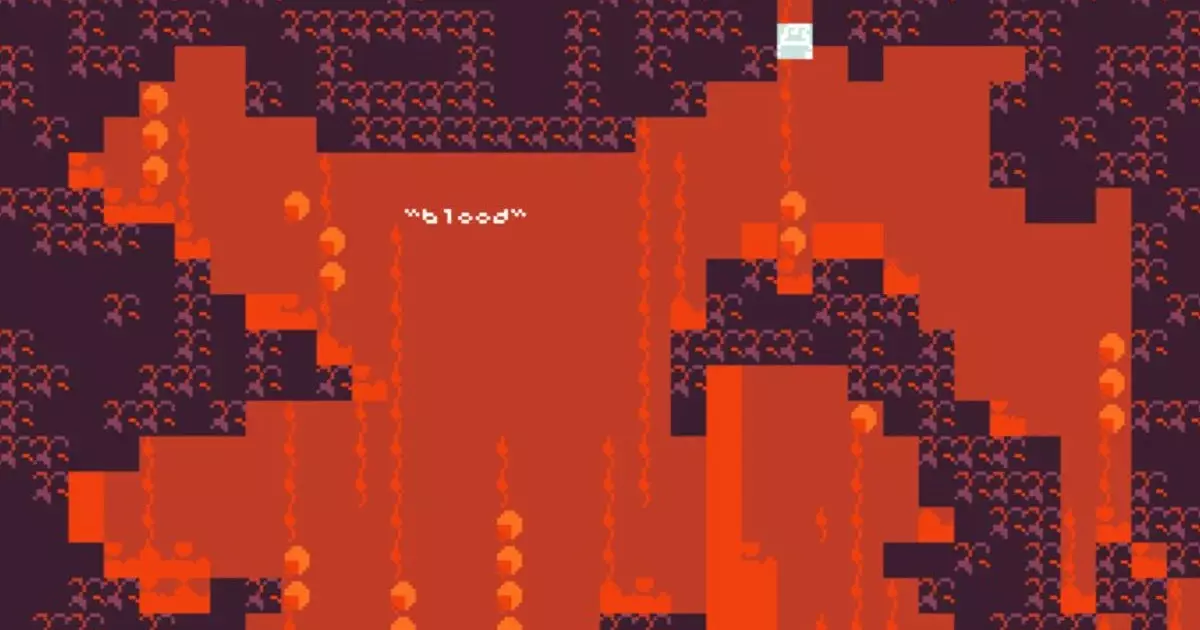The world of indie gaming often embodies the spirit of avant-garde creativity, and few creators exemplify this more than Droqen, the mind behind the enigmatic block-seeding puzzle game, *Starseed Pilgrim*. His latest venture, *The End Of Gameplay*, presents an intriguing, if not provocative, challenge to conventional gaming paradigms. The very title of the game beckons players to question the core of what gameplay has originally represented and explore the uncharted territories of gaming experience. In an age awash with meticulously crafted mechanics and repetitive gameplay loops, Droqen’s invitation to “kill gameplay” fills me with a mix of apprehension and excitement.
Droqen’s approach seeks to transcend traditional expectations and create a space for more abstract exploration. This act of deconstruction, however, introduces a degree of risk. Not everyone is willing to dabble in the peculiarities of gaming’s more obscure offerings, especially when they often toe the line between art and utility. Yet, this is where a refreshing possibility arises—a chance for players to encounter a game that resists easy categorization and instead embraces raw curiosity and openness.
The Allure of Obscurity
According to Droqen, the game is designed for those who enjoy the obscure and the poetic elements prevalent in minimalist gaming environments. Such an invitation resonates with a certain type of player, one who seeks to disentangle themselves from structured and repetitive gameplay that many mainstream titles offer. This delicate blend of exploration and ambiguity often fosters deeper emotional connections with the player’s experience. By stripping away the conventional structures of gameplay, *The End Of Gameplay* places intrinsic value on the act of discovery itself.
However, the challenge here lies in translating these artistic ideals into a tangible gaming experience. Abstract games like this may fail to resonate with a wider audience, particularly those unfamiliar with the avant-garde niche Droqen is so determined to explore. This could lead to a significant divide between those who “get it” and those who are left bewildered. But in an industry often defined by relentless commercialized replication, might it be worth embracing this division to cater to a community encountering gaming from a fresh lens?
Why Killing Gameplay Matters
Droqen’s chosen phrase, “kill gameplay,” strikes me as both empowering and alarming. It’s a bold proclamation in a domain that thrives on gameplay intricacies, be it through mechanics, narratives, or interactive designs. In many ways, this isn’t just an act of destruction; it signifies a rebirth—an invitation to plant seeds in the fertile ground of creativity and allow players to sculpt their own experiences without the constraining definitions of gameplay.
One interesting point raised in Droqen’s vision lies in the comparison of *The End Of Gameplay* to previous indie projects. The trend of offering a compilation of short-form games, popularized by creators like Terry Cavanagh and Stephen “thecatamites” Gillmurphy, speaks volumes about the evolving essence of the medium. These collections allow for varied experiences packaged into a single work, shifting focus away from a singular powerful narrative and towards a broader exploration of ideas. As Droqen himself pointed out, it’s a departure from what players are conditioned to expect, and therein lies the beauty of its potential.
In part, this anthology format allows for experimentation devoid of rigid expectations—a playground for players and creators alike to traverse without constraint. While earlier statements about *Starseed Pilgrim* suggest that its acclaim may have been limited to a niche audience, it is exciting to consider how *The End Of Gameplay* could bridge the gap through its combined intricacies.
A Community Waiting to Engage
Droqen’s jest regarding his desire to release *The End Of Gameplay* to a minimal audience highlights another key aspect: the power of community engagement and word-of-mouth in the indie gaming ecosystem. There’s an undeniable thrill in discovering a gem meant for a select crowd. If the marketing approach resonates and the hype builds organically, it might very well deliver a meaningful dialogue on what gameplay can and should represent.
Ultimately, what *The End Of Gameplay* promises is a courageous exploration of possibility. It’s a testament to the strength of indie developers to weave compelling narratives that challenge our understanding of gaming as a medium. Whether you gravitate towards the choted terrains of traditional gameplay or crave the uncultivated landscapes of abstract art, this forthcoming release might provoke thought in ways few modern titles dare to tread.


Leave a Reply